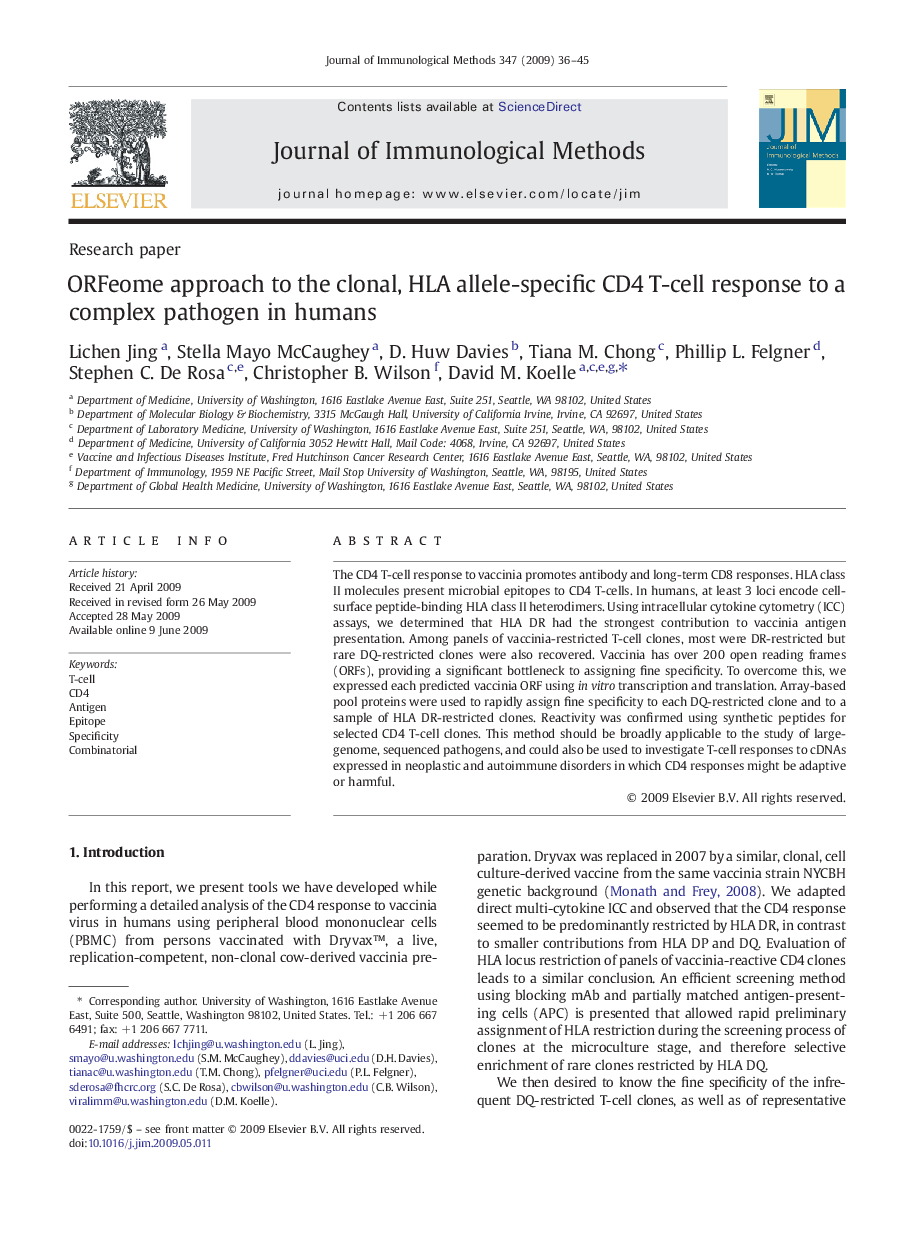| Article ID | Journal | Published Year | Pages | File Type |
|---|---|---|---|---|
| 2088884 | Journal of Immunological Methods | 2009 | 10 Pages |
The CD4 T-cell response to vaccinia promotes antibody and long-term CD8 responses. HLA class II molecules present microbial epitopes to CD4 T-cells. In humans, at least 3 loci encode cell-surface peptide-binding HLA class II heterodimers. Using intracellular cytokine cytometry (ICC) assays, we determined that HLA DR had the strongest contribution to vaccinia antigen presentation. Among panels of vaccinia-restricted T-cell clones, most were DR-restricted but rare DQ-restricted clones were also recovered. Vaccinia has over 200 open reading frames (ORFs), providing a significant bottleneck to assigning fine specificity. To overcome this, we expressed each predicted vaccinia ORF using in vitro transcription and translation. Array-based pool proteins were used to rapidly assign fine specificity to each DQ-restricted clone and to a sample of HLA DR-restricted clones. Reactivity was confirmed using synthetic peptides for selected CD4 T-cell clones. This method should be broadly applicable to the study of large-genome, sequenced pathogens, and could also be used to investigate T-cell responses to cDNAs expressed in neoplastic and autoimmune disorders in which CD4 responses might be adaptive or harmful.
